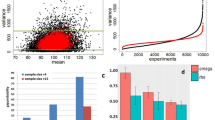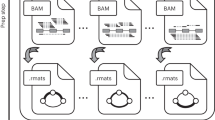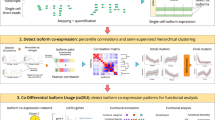Abstract
RNA-Seq is a powerful tool for the study of alternative splicing and other forms of alternative isoform expression. Understanding the regulation of these processes requires sensitive and specific detection of differential isoform abundance in comparisons between conditions, cell types or tissues. We present DEXSeq, a statistical method to test for differential exon usage in RNA-Seq data. DEXSeq employs generalized linear models and offers reliable control of false discoveries by taking biological variation into account. DEXSeq detects genes, and in many cases specific exons, that are subject to differential exon usage with high sensitivity. We demonstrate the versatility of DEXSeq by applying it to several data sets. The method facilitates the study of regulation and function of alternative exon usage on a genome-wide scale. An implementation of DEXSeq is available as an R/Bioconductor package.This preprint has subsequently been published in Genome Research (doi:10.1101/gr.133744.111)
Similar content being viewed by others
Article PDF
Author information
Authors and Affiliations
Corresponding author
Rights and permissions
About this article
Cite this article
Anders, S., Reyes, A. & Huber, W. Detecting differential usage of exons from RNA-Seq data. Nat Prec (2012). https://doi.org/10.1038/npre.2012.6837.2
Received:
Accepted:
Published:
DOI: https://doi.org/10.1038/npre.2012.6837.2
Keywords
This article is cited by
-
Bruchid beetle ovipositioning mediated defense responses in black gram pods
BMC Plant Biology (2021)
-
Uniform genomic data analysis in the NCI Genomic Data Commons
Nature Communications (2021)
-
Visualization methods for differential expression analysis
BMC Bioinformatics (2019)
-
Topology of the human and mouse m6A RNA methylomes revealed by m6A-seq
Nature (2012)



